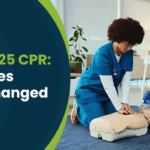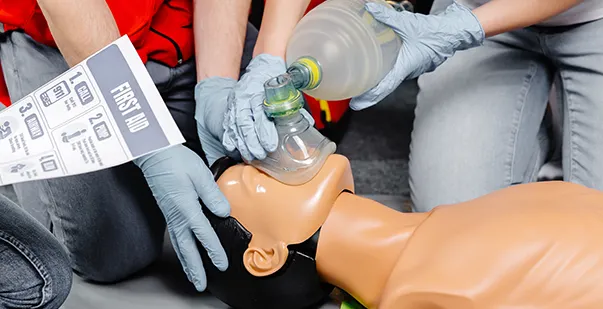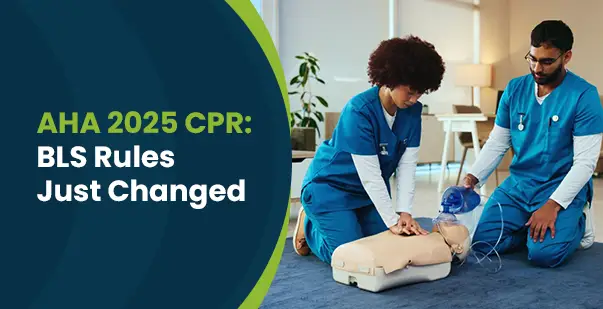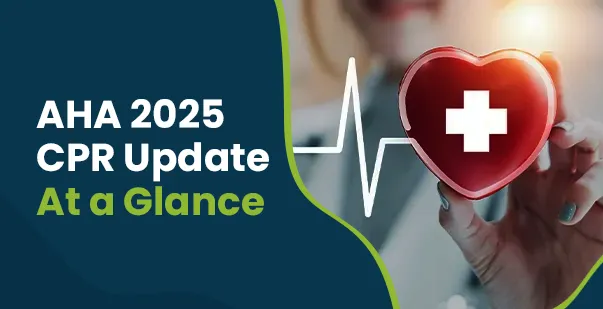A bag mask device is a lifesaving tool used during emergencies to help a person breathe when their natural breathing has stopped or is too weak. It is commonly used during a cardiac arrest or severe respiratory distress, or even if someone has drowned.
This device allows rescuers to deliver air directly into the patient’s lungs, making it a crucial part of emergency care. So, if you learn how to use this device in the right way, then the outcome is much better during life-threatening scenarios.
Most trained rescuers can effectively deliver two rescue breaths in less than 10 seconds using a bag mask device. This quick response helps maintain oxygen flow to the brain and vital organs, increasing the chances of survival. However, the technique requires practice and precision to avoid common issues like air leakage or excessive ventilation.
But don’t worry, because by the end of this guide you will have more confidence in delivering breaths and care during emergencies while using a bag mask device.
Understanding the Bag Mask
A bag mask device is used to provide emergency breaths to someone who is not breathing or struggling to breathe. It is a handheld tool that consists of a soft mask, a self-inflating bag, and a valve system.
The mask fits snugly over the patient’s nose and mouth, while the bag is squeezed to push air into the lungs. This makes sure that the body receives oxygen in the absence of normal inhalations.
Bag mask devices are widely employed when the patient is reported of cardiac arrest, respiratory failure or when performing CPR. They are essential in hospitals, ambulances, and even first aid kits for trained rescuers.
Proper use of the device helps keep oxygen flowing to vital organs, improving the person’s chances of survival until advanced medical care is available.
How to Preparing for Delivering Breaths
In order to effectively deliver breaths with a bag mask device, a few crucial preparatory measures are necessary. These measures include the following:
1. Assess the Patient’s Condition
Evaluating a person’s breath or breathing is the most important first step that is undertaken while providing any emergency care. To determine whether or not someone is breathing, do the following:
- Check Responsiveness: Gently tap the person and shout, “Are you okay?” to see if they respond.
- Open the Airway: If there’s no response, tilt the person’s head back and lift the chin to open the airway.
- Check for Breathing: Look at the person’s chest to see if it rises and falls. Listen for normal breathing sounds. Feel for breath on your cheek. Do this for no more than 10 seconds.
If the person isn’t breathing or is only gasping, it’s important to start CPR immediately. For example, if you find someone unresponsive and not breathing, you should call for emergency help and begin chest compressions right away.
Remember, quick action can save a life.
2. Position the Patient
Imagine you’re in an emergency situation where someone’s life depends on quick and efficient breathing support. The first thing you need to do is position the patient correctly to ensure their airway is open and clear.
This is a critical step because without an open airway, the bag mask device won’t be able to deliver the air properly to the lungs. If the patient is lying down, gently lay them flat on their back to make it easier to access their airway.
Next, it’s important to open the airway properly. For most patients, especially those who are unresponsive, you can use the head tilt-chin lift maneuver. Gently tilt the head back by lifting the chin to ensure the airway is clear. This positioning helps prevent the tongue from blocking the air passage, allowing you to deliver breaths effectively.
Remember: If there’s a suspicion of neck or spine injury, you can use the jaw thrust technique instead, which avoids tilting the head and keeps the neck stable.
3. Select the Appropriate Mask Size
A properly sized mask ensures a secure seal over the patient’s nose and mouth, allowing for efficient air delivery. Using a mask that is too large or too small can lead to air leaks, inadequate ventilation, and potential complications.
Studies have shown that using a pediatric bag mask device for adult patients can provide more consistent and appropriate ventilation parameters compared to an adult-sized device. For instance, the adult bag mask device delivered a mean tidal volume of 807.7 mL, while the pediatric device delivered 630.7 mL. Both volumes exceeded the recommended upper threshold of 560 mL for lung-protective ventilation in an adult male with an ideal body weight of 70 kg.
However, the pediatric device exceeded this threshold by 12.6%, whereas the adult device exceeded it by 44.2%. This indicates that the pediatric device may offer safer ventilatory parameters for adult patients.
Therefore, choosing the appropriate mask size based on the patient’s age and size is essential to ensure effective ventilation and minimize the risk of complications.
4. Check the Bag Mask Device
Before using a bag mask device, it’s essential to ensure all components are in good working condition.
Begin by inspecting the self-inflating bag for any signs of damage, such as tears or punctures, which could compromise its ability to deliver air.
Next, check the mask to ensure it is free from cracks or defects that might prevent it from forming a proper seal on the patient’s face. If the device includes an oxygen reservoir, confirm that it is securely attached and free from any blockages.
On top of it, verify that the oxygen inlet port is clean and unobstructed to allow for optimal oxygen delivery.
You should regularly perform these checks to ensure that the bag mask device is ready for effective use during emergencies.
5. Establish a Proper Seal
The C-E grip is a technique used to create a secure seal when using a bag mask device to assist breathing. This method involves forming a “C” shape with your thumb and index finger on the top of the mask, while your remaining fingers form an “E” shape under the patient’s jaw. This positioning helps lift the jaw and maintain an open airway, ensuring effective ventilation.
Proper hand placement is crucial for a good seal and effective ventilation. Place the mask over the patient’s nose and mouth. Use the “C-E” grip:
- C: Place your thumb and index finger on the top of the mask, forming a “C” shape.
- E: Place your remaining three fingers under the patient’s jaw, lifting it upward to help open the airway.
The “C” shape applies gentle pressure on the mask, keeping it firmly in place, while the “E” shape lifts the jaw, preventing airway obstruction. This technique allows the rescuer to deliver breaths effectively, ensuring oxygen reaches the patient’s lungs.
6. Begin Ventilation
To begin ventilation with a bag mask device, position the mask over the patient’s nose and mouth, ensuring a proper seal. Gently squeeze the self-inflating bag to deliver a breath, watching for the chest to rise, which indicates air is entering the lungs.
If the chest doesn’t rise, reposition the head and mask to ensure a proper seal and airway alignment. Continue ventilations at the appropriate rate for the patient’s age and condition.
Let’s understand with an example. In a cardiac arrest situation, a trained rescuer uses a bag mask device to provide breaths. After confirming the patient’s unresponsiveness and absence of breathing, the rescuer positions the mask correctly, delivers a breath, and observes the chest rise, indicating effective ventilation.
This process is repeated, ensuring the patient receives necessary oxygen until emergency medical services arrive.
Techniques for Delivering Breaths
Now that you know how to deliver breaths with a bag mask, this however, is not enough. You have to be pretty good at the technique while delivering breaths. So, here are a few essential techniques to help you out:
1. Position the Mask
We have already mentioned the importance of positioning the mask properly above, but let us make it more concise. To position the mask:
- Place the mask over the person’s nose and mouth, ensuring it covers both.
- Use your thumb and index finger to form a “C” shape on top of the mask, pressing down gently.
- Place your other fingers under the person’s jaw to lift it slightly, helping open the airway.
This technique, known as the “C-E grip,” helps create a proper seal and maintain an open airway.
2. Deliver the Breath
The bag mask device is made up of a self-inflating bag, a one-way valve, and a mask. When delivering breaths, it’s essential to create a good seal by placing the mask firmly over the patient’s nose and mouth.
Most people don’t realize that achieving a proper seal is more important than how hard you squeeze the bag. If the mask isn’t sealed correctly, air may leak, and the patient won’t receive enough oxygen.
To create a perfect seal, use the “C-E” grip—one hand makes a “C” shape on the top of the mask, while your other hand forms an “E” shape under the jaw to lift it slightly. This helps open the airway and ensures no air escapes, allowing for efficient breathing support.
3. Repeat as Needed
It’s important to deliver breaths at the correct rate to ensure they receive enough oxygen without causing harm. For adults, aim to give one breath every 5 to 6 seconds, which translates to 10 to 12 breaths per minute. For children and infants, the recommended rate is one breath every 3 to 5 seconds, or 12 to 20 breaths per minute.
Imagine you’re helping an adult who has stopped breathing. You would deliver one breath every 5 to 6 seconds, ensuring each breath lasts about one second and causes the chest to rise. This steady rhythm helps maintain oxygen levels in the person’s body until emergency medical help arrives.
Remember, it’s crucial to avoid giving breaths too quickly or forcefully, as this can lead to complications like air entering the stomach instead of the lungs.
Always monitor the person’s chest to confirm that each breath is effective.
Understand Two-Person Technique
The two-person technique for using a bag mask device involves two rescuers working together to provide effective ventilation to a patient. Here’s how it works:
1. Positioning the Mask
Positioning the mask properly is the first step in using a bag mask device effectively. To start, place the mask over the patient’s nose and mouth, ensuring it covers both areas completely. The mask should create a tight seal, so no air escapes.
To achieve this, use both hands to hold the mask in place. One common technique is the C-E grip that we already discussed above.
2. Creating a Seal
Creating a seal with a bag mask device is crucial to ensure air goes into the patient’s lungs instead of escaping.
To do this, the rescuer holding the mask (Rescuer 1) places it firmly over the patient’s nose and mouth, covering both.
The “C-E grip” helps achieve a good seal:
- The thumb and index finger form a “C” on the sides of the mask
- The remaining fingers (forming an “E”) lift the patient’s jaw to open the airway.
This keeps the mask snug and prevents air from leaking, ensuring proper ventilation.
3. Advantages
The two-person technique has several advantages. First, it helps ensure a better seal between the mask and the patient’s face, reducing the chances of air leakage.
With one person holding the mask securely, the other can focus on squeezing the bag to deliver breaths efficiently. This teamwork allows for more controlled and consistent air delivery, improving the effectiveness of ventilation.
On top of that, it reduces the risk of improper ventilation, such as over-inflating the lungs, and makes the process smoother and faster, especially in high-pressure emergency situations.
Learn the Right Way to Use a Bag Mask and Save Lives
Providing assisted ventilation via bag mask is important when a patient is in respiratory failure. Having the right technique guarantees that the airway is patent, ventilation is accomplished and that the person is sufficiently oxygenated.
In order to use a bag mask appropriately, practice and training are needed. Intervention whether by a single person or a two person team is timely and can be a life saver.
Always ensure to obtain the proper certification and practical training to effectively and confidently manage a respiratory crisis.









